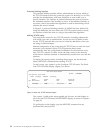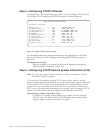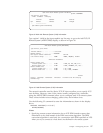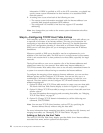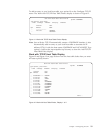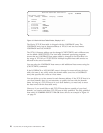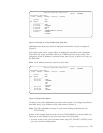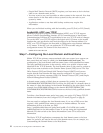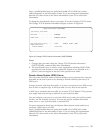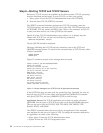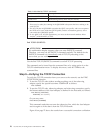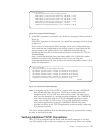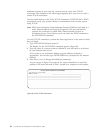v Simple Mail Transfer Protocol (SMTP) requires your host name to be in the host
table or on a domain name server.
v You may want to use your host table on other systems in the network. Your host
name must be in the host table on those systems so they can refer to your
system by name.
v Applications written to use host table lookup routines may require this
information.
When you are finished working with the host table, press F3 (Exit) or F12 (Cancel).
AnyNet/400: APPC over TCP/IP
Advanced program-to-program communication (APPC) over TCP/IP support
allows Common Programming Interface (CPI) Communications or Intersystem
Communications Function (ICF) applications to run over TCP/IP with no changes.
To use the APPC over TCP/IP support, the logical unit (LU) name or the remote
location that your application uses must be mapped to an Internet address. For
APPC over TCP/IP support, the host table is configured to map Internet addresses
to LU names. To do this, you can update the TCP/IP host table using the
configuration menus. The format for the host name is:
LUNAME.NETID.SNA.IBM.COM
Step 7—Configuring the Local Domain and Host Name
Within TCP/IP, the primary name associated with your system (your system can
have more than one name) is called your local domain and host name. The
combination of the local domain and host name forms a fully-qualified host name.
The fully qualified host name is the name by which your system is known and
identified in the TCP/IP domain. The local domain name is also used by sockets to
help in host name resolution at the Domain Name System (DNS) server. The Post
Office Protocol (POP) and Simple Mail Transfer Protocol (SMTP) mail servers
require that the local domain and host name be configured. It is used, but not
required, by line printer requester (LPR), File Transfer Protocol (FTP), and Simple
Network Management Protocol (SNMP).
A domain name consists of labels that are separated by periods, for example,
SYSNAM890.ROCHESTER.IBM.COM. For hosts, the first label in a domain name is
the name of a host that belongs in the domain identified by the other labels. In this
example, host SYSNAM890 belongs to the domain ROCHESTER.IBM.COM.
SYSNAM890.ROCHESTER.IBM.COM is known as the host’s fully qualified domain
name.
To define a local domain name and a host name, use option 12 (Change TCP/IP
domain information) from the Configure TCP/IP menu (Figure 2 on page 8).
You may need to configure the local domain name if you use a DNS server that
requires a fully qualified host name to resolve an Internet address. For more
information on how to do that, see DNS
(http://publib.boulder.ibm.com/pubs/html/as400/v5r1/ic2924/info/rzakk/
rzakkkickoff.htm) in the Information Center. If you are using the Supplemental
Manuals CD, then switch to the iSeries Information Center CD to access this
information.
The iSeries TCP/IP applications concatenate the local domain name to the host
name if a period is not used at the end of the domain name. For an example, see
Concatenating the Domain Name to the Host Name
22 OS/400 TCP/IP Configuration and Reference V5R1



